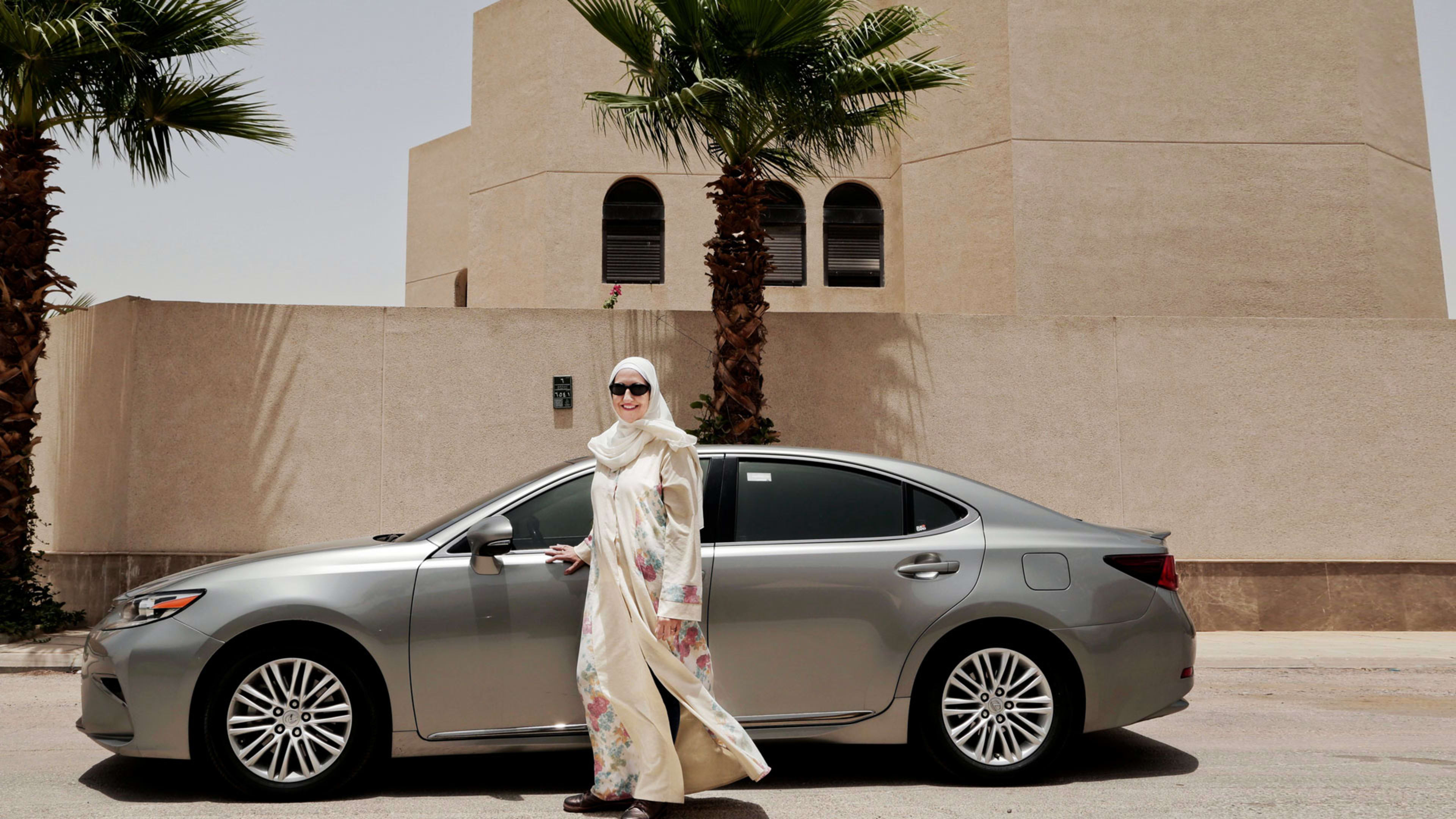Uber was supposed to take over the world. Investors dueled to stake billions in the company on the assumption it would become the global market leader—the Google- or Facebook-style winner-take-all of the ride-hailing industry.
It hasn’t turned out that way, with Uber in retreat overseas. After storming into Russia and China five years ago, Uber has since pulled out of both countries. And earlier this year, it announced it was also giving up Southeast Asia. Altogether, Uber has effectively ceded half the world’s potential customers.
Even in the Middle East, a part of the world not known for its startup prowess, Uber has failed to dominate. The leader there is Dubai-based Careem, a six-year-old startup founded by two ex-McKinsey & Company consultants. The amount of money it’s raised isn’t even 3% of Uber’s war chest, and yet the company is still outpacing the Silicon Valley giant.
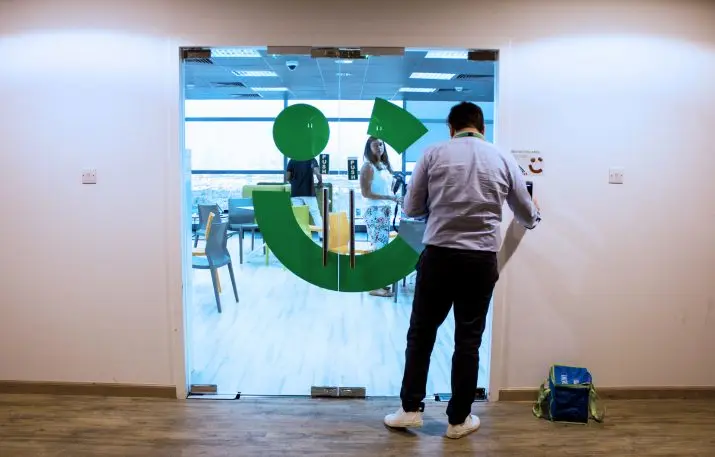
The factors driving Careem’s success in the Middle East (and Uber’s retreats elsewhere) are bringing into focus a key limitation of ride hailing—one that Silicon Valley, in its exuberance over this new sector, seems to have underestimated: Unlike purely digital plays, like Google and Facebook, ride hailing is a highly local enterprise.
Why ride hailing is tricky
The excitement over ride hailing always focused on the technology. Glorious new smartphone apps suddenly enabled riders and drivers to pair up rapidly and conveniently—and made it possible for anyone to make side income by becoming a chauffeur. And certainly, the technology these companies are building is extraordinary, such as algorithms that can figure out in real time where the next half hour’s demand will come from, and then dispatch drivers to those locations. Many thought a company like Uber could follow Google’s and Facebook’s path to worldwide dominance.
“The old playbook is that you set up an algorithm—an app—and launch it everywhere,” says Howard Yu, a professor of management and innovation at the IMD business school in Switzerland. Forget about making modifications for local markets. “You quickly roll out across the world to have first-mover advantage,” Yu says.
But ride hailing, it turns out, is more of a real-world industry that is simply enabled by technology. The 1’s and 0’s are important, but the core business is ultimately about flesh-and-blood passengers getting into actual cars. As a result, success depends on incorporating local norms and needs.
“The dimensions of culture, trust, and empathy become really critical,” says Yu, whose book LEAP: How to Thrive in a World Where Everything Can be Copied came out earlier this year. “If people don’t trust a setup, or if it has negative consequences to one’s social status or standing, it’s not going to fly.” That adds considerable friction to startups wanting to move into foreign markets—and gives an advantage to regional competitors with their inherent grasp of local consumers.
Related: Saudi women got their licenses and signed up as ride-hailing drivers
Dara Khosrowshahi, who took over at Uber after the combative Travis Kalanick was booted last year, seemed to acknowledge this reality in April. “One of the potential dangers of our global strategy is that we take on too many battles across too many fronts with too many competitors,” Khosrowshahi wrote in a note to employees regarding the decision to leave Southeast Asia. The admission underscored the difference between this industry and purely digital ones: Regional competition was never a meaningful barrier for either Google or Facebook.
Uber executives have asserted they’re done with pulling back overseas. At the Code 2018 conference earlier this year, Khosrowshahi even asserted—brashly, perhaps—that Uber expects to dominate the regions where it remains—India, Africa, and the Middle East. It’s a bold gambit. The company’s remaining competitors are all regional players who understand their customers well—companies like Careem that early on factored in the centrality of women and the primacy of cash. As Khosrowshahi architects Uber’s path forward—and as other globally aspiring startups from Silicon Valley increasingly involve real-world components—they could do worse than draw lessons from how Careem came to win the Middle East. Here is its story.
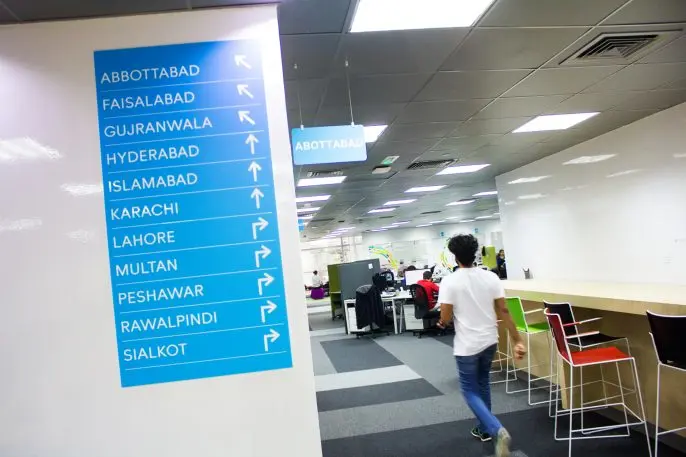
The Careem story
Careem was the brainchild of a Stanford MBA from Pakistan who had worked in Silicon Valley, and a Swede who’d been doing tech consulting since his teens. Mudassir Sheikha and Magnus Olsson met in Dubai after being posted to the region with McKinsey. By 2012, both wanted to strike out on their own.

The strife in the Middle East that makes headlines in the West often finds its roots in severe unemployment and a general lack of opportunity. A 2013 World Economic Forum report said the Arab world would need to create 75 million new jobs by 2020, but it wasn’t clear where they’d come from. Most people do low-paid work as day laborers or employees of small family businesses. White-collar jobs mostly come from large multinationals and state-run enterprises. There’s almost no entrepreneurial tradition like that found elsewhere, where a person can start with an idea and build a company worth hundreds of millions of dollars.
I meet Sheikha, 41, one evening at Careem’s headquarters in a nondescript office tower in Dubai’s Media City. While the whiteboard in our conference room sports a quote from Sheikh Mohammed Bin Rashid Al Maktoum, the vice president and prime minister of the United Arab Emirates and ruler of the Emirate of Dubai (“They say the sky is the limit for ambition. We say: The sky is only the beginning”), everyone at Careem tells me that Sheikha’s defining characteristic is profound humility.
Sheikha tells me how he and Olsson wanted to build a large, long-lasting company whose overarching goal was to inspire the region’s nascent startups to believe unicorns were possible in this part of the world—and hopefully encourage other entrepreneurs to build more such companies of their own. This idea had been fueled in part by an unsettling discovery during Sheikha’s consulting years: During a gig in Pakistan, Sheikha had learned that, other than oil-and-gas companies and state enterprises, his home country (with a population of around 193.2 million) had only produced a single billion-dollar company. “It’s not like people in Pakistan are not hard-working, smart, [or] enterprising,” he says. “But somehow, we’ve not been able to organize ourselves to build these large institutions.”
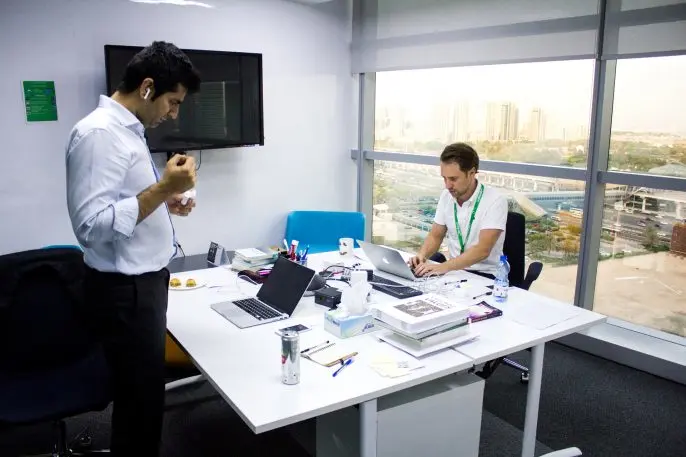
What started as an executive car service has grown into a full-blown ride-hailing operation with 1 million drivers and 25 million users across 14 countries. Month-over-month growth has been as high as 30%. The company has raised almost $600 million, according to Crunchbase, and its investors reportedly include lofty backers like Didi Chuxing, Daimler, and Silicon Valley’s Lumia Capital.

Uber entered the region not long after Careem’s launch, but Olsson, 37, assures me during a conversation one afternoon in a sun-filled conference room that the company doesn’t spend much time thinking about its giant competitor. Olsson, who settled in Abu Dhabi after marrying a local and who operates as the company’s chief xperience officer, sports a gray T-shirt bearing the company motto, “Yalla” (Arabic for “Let’s go”). He pulls out McKinsey-style slide decks to expand on specific points, and his laser-fast brain bounces through facts and concepts with impressive speed and clarity. (“He’s ridiculously sharp,” says VP of product Wael Nafee.)
Related: Inside Dubai’s bid to become the Middle East’s tech hub
“We focus on what we want to do better, and we go do that,” Olsson explains. This is a company, after all, where regional executives make weekly calls to local drivers to find out if there are any new, undetected issues. “We’ve been successful,” Olsson says, “because we kept solving local problems.”

Cultural considerations
Take women, for example. Under Kalanick, Uber developed a notorious reputation around women in general and passenger safety in particular. Khosrowshahi is trying to fix this, of course, but it could take a while: The company lost two senior female employees this summer, including a gender and diversity expert brought in to tackle the company’s management issues.
Careem, on the other hand, assessed early on that women passengers would be critical to its success—a fact that might seem surprising, given that the Middle East is often considered oppressive toward women. While the region is conservative, the limitations have created opportunity. Saudi Arabia, for example, is one of the region’s largest markets. Until this summer, however, women were barred from driving. Careem gave them mobility. Today, the vast majority of Careem’s customers in Saudi Arabia—70%—are women.
Winning that customer base involved more than simply launching the service. Not only did it have to be safe, it had to be perceived as safe. A woman wouldn’t get into a stranger’s car if she believed her reputation was at risk, never mind her safety.
Early on, Careem developed a call-masking option that lets passengers prevent drivers from seeing their phone numbers (and possibly trying to contact them later). An emergency hotline staffed by call center operators allows passengers to call for help in real time. Careem does extensive background checks on its drivers, sometimes even sending investigators to conduct interviews among prospective drivers’ neighbors. Once accepted, drivers are instructed not to make small talk with women (often considered inappropriate in the Middle East), and they’re told to only use their side mirrors, so women don’t have to worry that drivers are trying to steal glances at them through the rearview mirror.
The company also uses “a female lens” to structure the service for women drivers, says Nuzhat Naweed, the company’s VP of customer experience. They’re still a huge minority of the drivers, but Careem hopes to have 20,000 of them on the platform by 2020. Like passengers, women drivers have access to Careem’s emergency hotline, and the company’s safety centers prioritize their calls. Careem has also reconsidered its bonus and income guarantee structures, which are often tied to factors such as the number of rides accepted during high-volume periods, like rush hours. In some markets, Careem uses different criteria for women. “We realize they work at different times of the day,” Naweed says.
As for ratings, it’s industry standard that drivers’ willingness to pick up the fares sent to them influences their numbers. (The faster drivers accept rides, the faster customers get picked up, and the happier they are.) But Careem allows women to be pickier about who they accept, based on riders’ gender, customer ratings, or destinations. (They can sometimes decline trips to dangerous neighborhoods, for example.) “We’re departing from the normal rules,” Naweed says. “We specifically cater a product that is for them.”
A different transaction structure
A key tenet of the new sharing economy has been “seamless payments.” Users of apps like Airbnb, TaskRabbit, and Grubhub never have to deal with the messy task of exchanging money. The companies collect credit card numbers up front and transfer money from customer to vendor behind the scenes. Seamless payments don’t just make the experience more pleasant; they’re also critical for growth. The less hassle, the more use. It’s gospel in Silicon Valley that neither an Uber nor an Airbnb would have been possible before such capabilities.
Which is why Nafee, the VP of product, was thrown for a loop early on when Olsson decided Careem would have to support cash payments. “Everyone thought he was mad,” Nafee says. “It was an operational nightmare.”
The Middle East is one of the least banked regions in the world. Few people have credit cards. Even in e-commerce, most sales are “cash on delivery”—meaning online retailers have to rely on postal couriers to collect payments at the door.
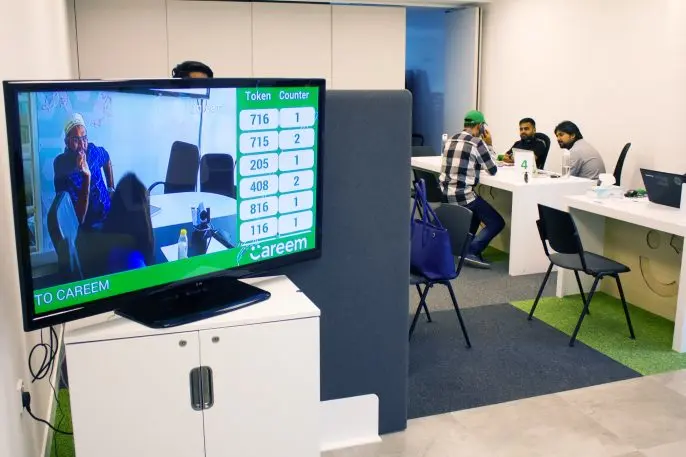
Excess payments are deposited in the passenger’s in-app wallet for use on future trips. Many users like the feature so much that they now “top up” their wallets (like they do minutes on their cell phones) by giving drivers wads of cash so they don’t have to pay on each ride.
Working with regulators
One of the things Uber became famous for under Kalanick—or notorious, depending on how you see it—was the way it ran roughshod over local regulators. Early on, Kalanick was dubbed the Valley’s “rebel hero” for the way he steamrolled over officials tasked with regulating the legacy taxi industry, who the Valley often saw as standing in the way of obvious progress.
Middle Eastern regulators are no less retrograde than their Western counterparts, but Careem believes diplomacy and collaboration will result in progress. Samir Satchu, Careem’s head of government relations, tells me about the company’s experience in Palestine last year. Careem launched in Ramallah over the summer, but by the fall, Palestinian authorities had banned it, following complaints from taxi drivers.
The obvious play would have been to use stories in the international media to strong-arm the Palestinians, Satchu said. Instead, Careem chose to stay quiet and negotiate behind the scenes. “Patience is a word we use quite a lot,” Satchu says. “If your mission is tied to the improvement of people’s lives, you’re not going to achieve that over one year . . . There has to be a much more sustainable and longer-term outlook.”
Careem’s strategy with regulators is to emphasize how its goals dovetail with the governments’: They both want to create the jobs the region so desperately needs. Working with officials “can be a little bit painful in the short term,” Sheikha concedes. But “governments and regulators are sitting on a lot of resources that can make change happen in a much bigger way,” he explains. “We want them on our side.”
The quiet approach in Palestine worked. By March, authorities lifted the ban, and Careem was back on the road.
Taking care of drivers
Under Kalanick, Uber often seemed callous toward the drivers on its platform. It was the “gig economy,” after all. Everyone was responsible for themselves. In a famed altercation captured on video last year, Kalanick came across as downright contemptuous. A driver tried to engage him on fluctuating pay rates, but Kalanick fired back a jibe about personal responsibility. (More recently, a new series of ads under Khosrowshahi, who is conversely known for his congeniality and diplomacy, says the company is moving “in a new direction.”)
At Careem, by contrast, respect for drivers was emphasized from the beginning. Like Uber and other ride-hailing companies around the world, Careem has faced complaints about fare rates—something it has little wiggle room over (more about that later). But Careem has tried in other ways to convey that it values the people who choose to drive for it. Take the title “captain,” which is how it refers to drivers. Wealthy families in the region often had private chauffeurs, so the term “driver” connotes servitude. “Captain” grants authority. A young driver in Cairo puffs up when I ask him how he likes the title, and in Dubai, another proudly tells me that, when he stops by the company’s street-level driver center, the agents there call him “Sir.”

“What he’s building here is a group of people who are very committed to him and to Careem for the long term,” says Satchu, the head of government relations. It’s a different approach from the ruthlessness that enabled Uber to expand so quickly. “But the outcomes could be much greater and more long-lasting,” Satchu says.
Razor-thin margins
Uber’s departures from Russia, China, and Southeast Asia weren’t total losses. The company traded its local operations for stakes in its regional competitors. Based on the recent reports about talks between Uber and Careem, a similar consolidation might be in the works in the Middle East.
Or it might not.
An Uber spokeswoman told Fast Company the reports were “speculative.” Careem declined to comment, but speaking at a TechCrunch event in Beirut last week, Olsson seemed to wave off acquisition rumors. He reminded the audience that one of Careem’s goals is to inspire other Middle Eastern entrepreneurs to dream big. “If you’re going to keep inspiring, you have to stay independent,” he said.
Either way, Uber hasn’t remained stagnant—in the Middle East or elsewhere. It’s adopted features pioneered by others, such providing a cash option in some markets. Sexual harassment training is part of its driver onboarding in Egypt and Pakistan, and it’s currently researching the requirements of women drivers in the Middle East. But even with Uber’s greater focus on local needs, ride hailing might still end up being an industry where there is no single global leader.

The real returns might ultimately come from a more fundamental place: the companies’ underlying infrastructure. Think, for example, about how Amazon makes a big chunk of its profits from Amazon Web Services rather than from retail. Careem is exploring a similar direction. The infrastructure it’s built up enables it to operate in more than a dozen countries—no mean feat when you consider the countless challenging and expensive regulations each country requires of the companies that want to operate in them. A “Careem Platform Services” could allow companies throughout the region to piggyback on top of Careem’s framework and spread themselves abroad without having to set up shop in each individual country. “It will become super-cheap and super-affordable to build a regional startup,” Sheikha says.
For now, though, Careem remains nose-to-the-grindstone, hyper-focused on growing a company that will outlast its founders. Their main threat, Sheikha and Olsson tell me, is not some behemoth from the West. It’s becoming lax, internally, about tracking the needs of the people that make its business possible: the customers and drivers. One of their key values, “service,” Sheikha tells me one evening, means remaining “open to learning and new ideas—to make sure you never reach a point where you think you know everything and you’re better than everyone.” That mind-set fuels the humility everyone tells me about.
“If you’re not humble,” Sheikha says, “you will overlook things, and that will become the source of your decline.”
Recognize your brand’s excellence by applying to this year’s Brands That Matter Awards before the early-rate deadline, May 3.
